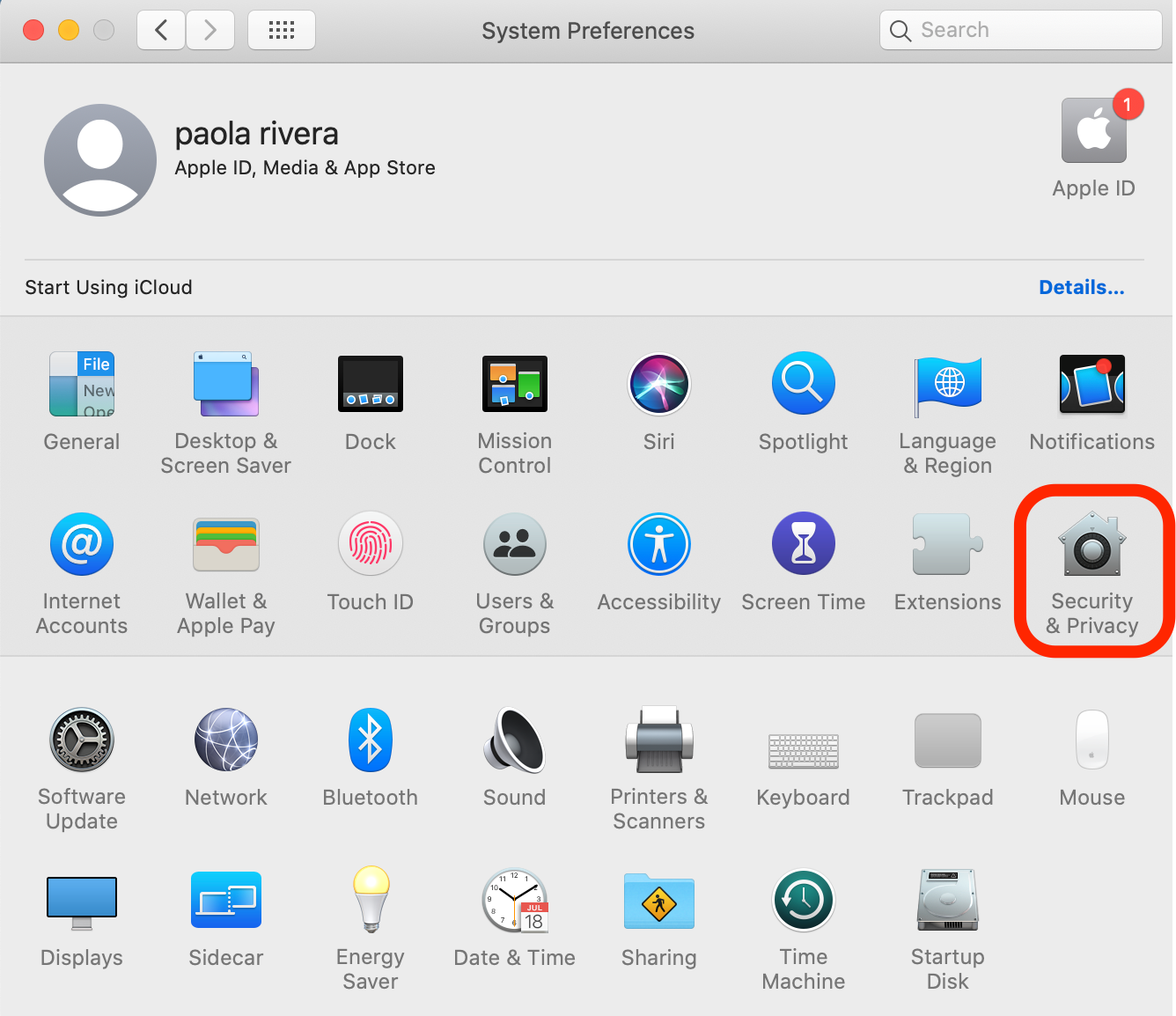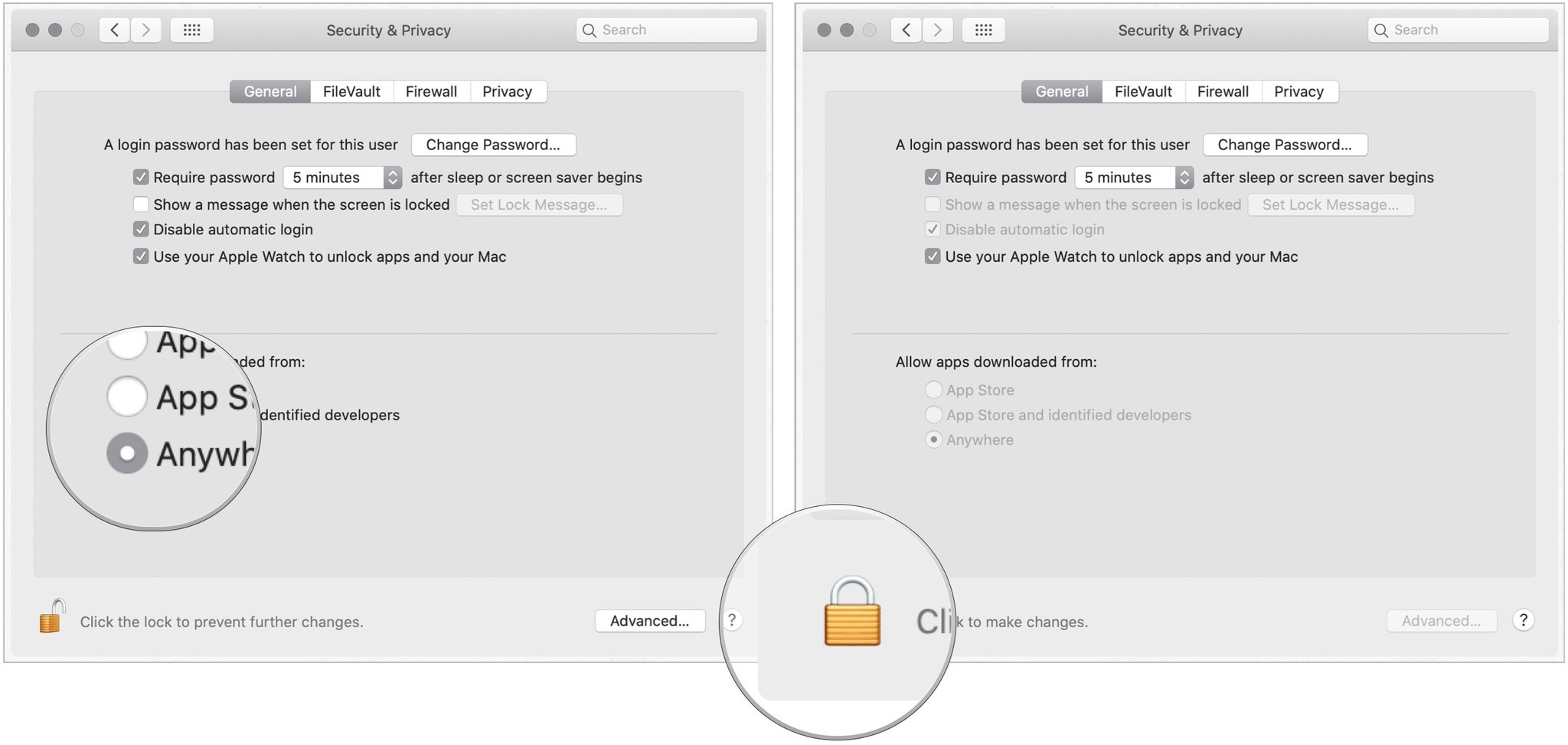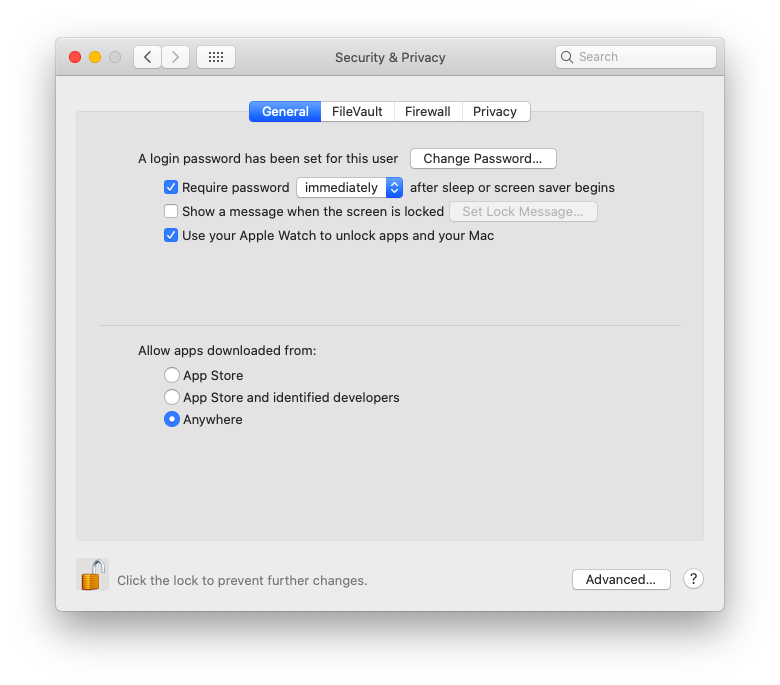Allow Apps Downloaded From Anywhere Mac Catalina
Locate the 'Allow applications downloaded from' option and select the last option named 'Anywhere'. A new warning message will pop up - select Allow From Anywhere. From this point, the Mac's Gatekeeper will stop blocking applications created by unidentified developers. Back to Table of Contents Allow apps from anywhere on macOS Sierra. Almost all of the best apps available are just not offered in the Apple app store. However, it just takes a few steps and you can allow apps downloaded from anywhere on Mac. Article Guide Part 1. Implement Mac Allow Apps Downloaded From Anywhere Part 2. How To Open Mac Apps Bypassing Gatekeeper? Part 3. How Several Risky Applications Will. How to Allow Apps from Anywhere on macOS Big Sur.Over the years, Apple has put its vast resources into making it's operating systems more secure for end-users. In macOS Catalina, the company has taken this to all-new levels by introducing beneficial security changes that make it even harder for miscreants to play havoc with our computers.
The safest place to get apps for your Mac is the App Store. Apple reviews each app in the App Store before it’s accepted and signs it to ensure that it hasn’t been tampered with or altered. If there’s ever a problem with an app, Apple can quickly remove it from the store.
If you download and install apps from the internet or directly from a developer, macOS continues to protect your Mac. When you install Mac apps, plug-ins, and installer packages from outside the App Store, macOS checks the Developer ID signature to verify that the software is from an identified developer and that it has not been altered. By default, macOS Catalina and later also requires software to be notarized, so you can be confident that the software you run on your Mac doesn't contain known malware. Before opening downloaded software for the first time, macOS requests your approval to make sure you aren’t misled into running software you didn’t expect.
Intel wifi 3945abg driver windows 10.
Running software that hasn’t been signed and notarized may expose your computer and personal information to malware that can harm your Mac or compromise your privacy.
The warning messages displayed below are examples, and it's possible that you could see a similar message that isn't displayed here. Please use caution if you choose to install any software for which your Mac displays an alert.
View the app security settings on your Mac
By default, the security and privacy preferences of your Mac are set to allow apps from the App Store and identified developers. For additional security, you can chose to allow only apps from the App Store.
In System Preferences, click Security & Privacy, then click General. Click the lock and enter your password to make changes. Select App Store under the header “Allow apps downloaded from.”
Open a developer-signed or notarized app
If your Mac is set to allow apps from the App Store and identified developers, the first time that you launch a new app, your Mac asks if you’re sure you want to open it.
An app that has been notarized by Apple indicates that Apple checked it for malicious software and none was detected.
If you see a warning message and can’t install an app
If you have set your Mac to allow apps only from the App Store and you try to install an app from elsewhere, your Mac will say that the app can't be opened because it was not downloaded from the App Store.*
If your Mac is set to allow apps from the App Store and identified developers, and you try to install an app that isn’t signed by an identified developer and—in macOS Catalina and later—notarized by Apple, you also see a warning that the app cannot be opened.
If you see this warning, it means that the app was not notarized, and Apple could not scan the app for known malicious software.

You may want to look for an updated version of the app in the App Store or look for an alternative app.
If macOS detects a malicious app
If macOS detects that software has malicious content or its authorization has been revoked for any reason, your Mac will notify you that the app will damage your computer. You should move this app to the Trash and check 'Report malware to Apple to protect other users.'
If you want to open an app that hasn’t been notarized or is from an unidentified developer
Running software that hasn’t been signed and notarized may expose your computer and personal information to malware that can harm your Mac or compromise your privacy. If you’re certain that an app you want to install is from a trustworthy source and hasn’t been tampered with, you can temporarily override your Mac security settings to open it.
If you still want to open an app for which the developer cannot be verified, open System Preferences.*
Go to Security & Privacy. Click the Open Anyway button in the General pane to confirm your intent to open or install the app.
The warning prompt reappears, and if you're absolutely sure you want to open the app anyway, you can click Open.
The app is now saved as an exception to your security settings, and you can open it in the future by double-clicking it, just as you can any authorized app.
Privacy protections
macOS has been designed to keep users and their data safe while respecting their privacy.
Gatekeeper performs online checks to verify if an app contains known malware and whether the developer’s signing certificate is revoked. We have never combined data from these checks with information about Apple users or their devices. We do not use data from these checks to learn what individual users are launching or running on their devices.
Notarization checks if the app contains known malware using an encrypted connection that is resilient to server failures.

These security checks have never included the user’s Apple ID or the identity of their device. To further protect privacy, we have stopped logging IP addresses associated with Developer ID certificate checks, and we will ensure that any collected IP addresses are removed from logs.
In addition, over the the next year we will introduce several changes to our security checks:
- A new encrypted protocol for Developer ID certificate revocation checks
- Strong protections against server failure
- A new preference for users to opt out of these security protections
* If you're prompted to open the app in Finder and you're sure you want to open it despite the warning, you can control-click the app, choose Open from the menu, and then click Open in the dialog that appears. Enter your admin name and password to open the app.

This page describes macOS 11.0 (Big Sur) specific information.
If you have previous macOS version please refer to previous macOS SIP instructions.
You might want to read this blog post for historical context.
TotalFinder has support for macOS 11.0 (Big Sur), but cannot run on a normally configured machine due to System Integrity Protection (SIP). This article can help you how to configure your machine to allow TotalFiner installation by modifying security setting.

If you decide to modify the settings, you will be able to install TotalFinder. Just to be clear…
MacOS Catalina runs in its own read-only volume, so it’s separate from all other data on your Mac, and nothing can accidentally overwrite your system files. And Gatekeeper ensures that new apps you install have been checked for known security issues before you run them, so you’re always using good software. Personally, this is my most preferred method because it is safer than disabling the gatekeeper completely. To allow any unidentified app, you will have to go to system preferences and allow your macOS Catalina to open it. This reduces the risk of automatically opening a software containing malware. The following are the steps involved: 1.
Your machine may be less secure when you disable extra security features. It is entirely your decision to modify the settings.
What is different in macOS 11.0 (Big Sur)?
The Finder binary is newly marked as a “platform binary”. That means that system prevents injecting or loading any code which is not signed by Apple developers. This feature is called “Library Validation” and was first introduced in macOS 10.10 (Yosemite). Finder didn’t participate in this prior macOS 11.0.
Currently in beta macOS 11.0 users can disable Library Validation using this command in Terminal.app:
This will allow injection of TotalFinder code in Finder. But please note that Library Validation is disabled system-wide. So any app which relied on Library Validation might be less secure.
How to install TotalFinder by turning off System Integrity Protection
TotalFinder will guide you through the process via notification dialogs. Please check the TotalFinder installation page for general installation steps. This document explains SIP-specific steps.
You must boot into the Recovery OS. You do this by restarting your machine, and holding Command+R until the Apple logo appears. Then select Terminal from the Utilities menu. It looks like this:
In the window that opens, type csrutil disable and press return. How to display apps in dashboard mac. This turns off System Integrity Protection so that TotalFinder can be installed.
Reboot your machine and you may install and run the latest version of TotalFinder.
Unfortunately you have to keep SIP disabled to allow TotalFinder. In earlier macOS versions it was possible to turn SIP off only to complete TotalFinder installation steps and enable it back again. That is no longer possible in recent macOS releases due to hardened security settings.
Technical details
Allow Apps Downloaded From Anywhere
TotalFinder works by altering the built-in system application Finder.app.
Macos Catalina Allow Apps From Anywhere Internet
In order to change some features of Finder, we use a technique called code injection. This means we add some additional code to the Finder program whilst it is running to do what we need. Bluestacks 1 indir windows 7. This is relatively safe - in fact we do not change any part of macOS on the disk. You only have to quit Finder via Command+Option+Esc, and the Finder will restart and everything will be as if TotalFinder was never running.
However, in macOS 10.11 (El Capitan) and later the macOS developers added a feature that disallows this kind of modification even if you have administrator access. It will also disallow other kinds of modifications (such as replacing parts of the system on disk).
Uninstallation and SIP
Disable Gatekeeper Mojave
How To Allow Apps From Anywhere In Macos Catalina
To remove TotalFinder from your system, run the uninstaller found on the latest dmg download of TotalFinder.